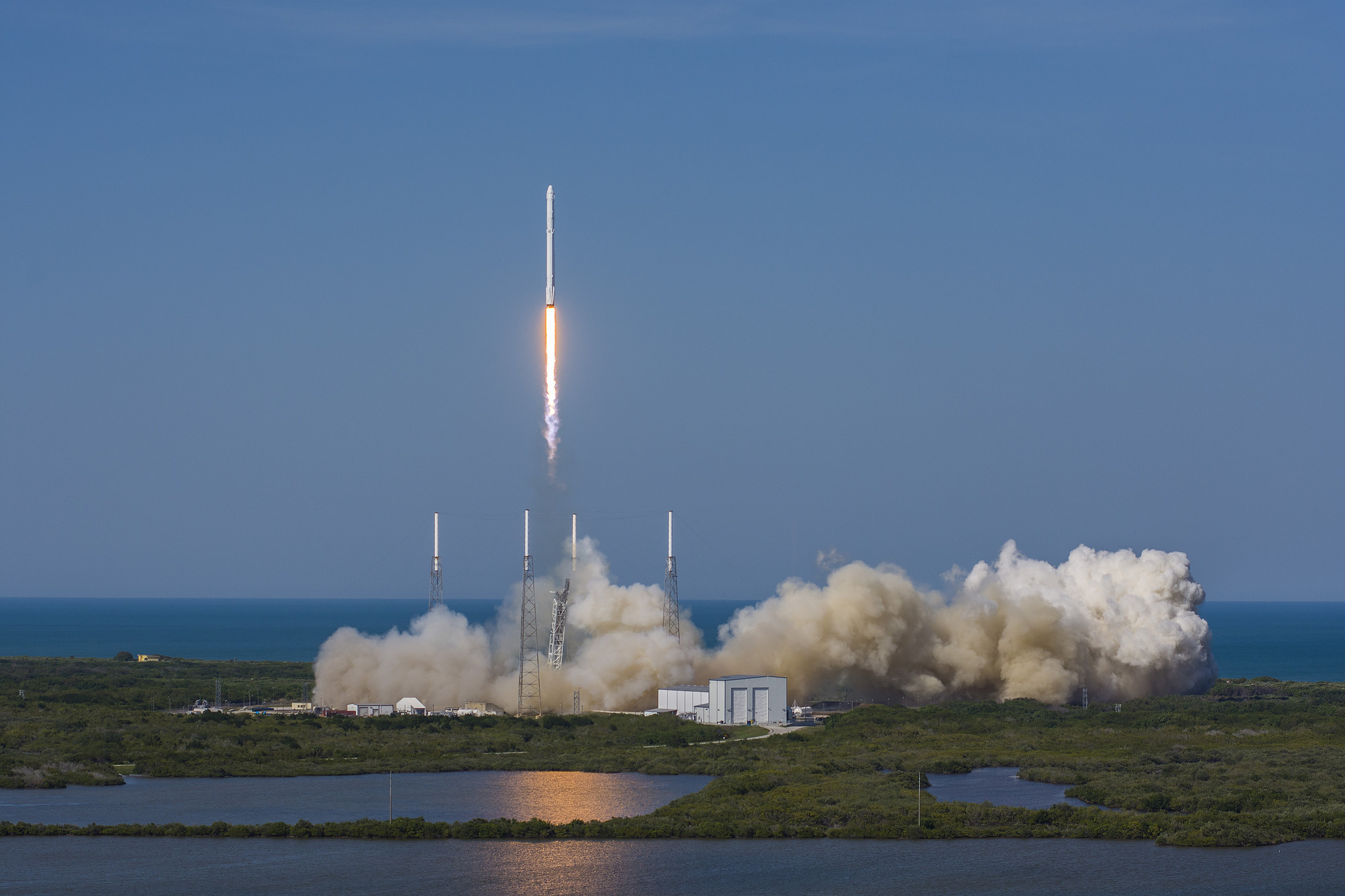 How do you launch and land a rocket in the same day? Here's how.SpaceX
How do you launch and land a rocket in the same day? Here's how.SpaceX A couple of weeks before the April 8, 2016 CRS-8 launch, the Bigelow Expandable Activity Module was loaded into the trunk of the Dragon spacecraft.SpaceX
A couple of weeks before the April 8, 2016 CRS-8 launch, the Bigelow Expandable Activity Module was loaded into the trunk of the Dragon spacecraft.SpaceX The day before launch, Dragon was loaded with "late load" cargo in advance of the April 8 trip to the International Space Station.SpaceX
The day before launch, Dragon was loaded with "late load" cargo in advance of the April 8 trip to the International Space Station.SpaceX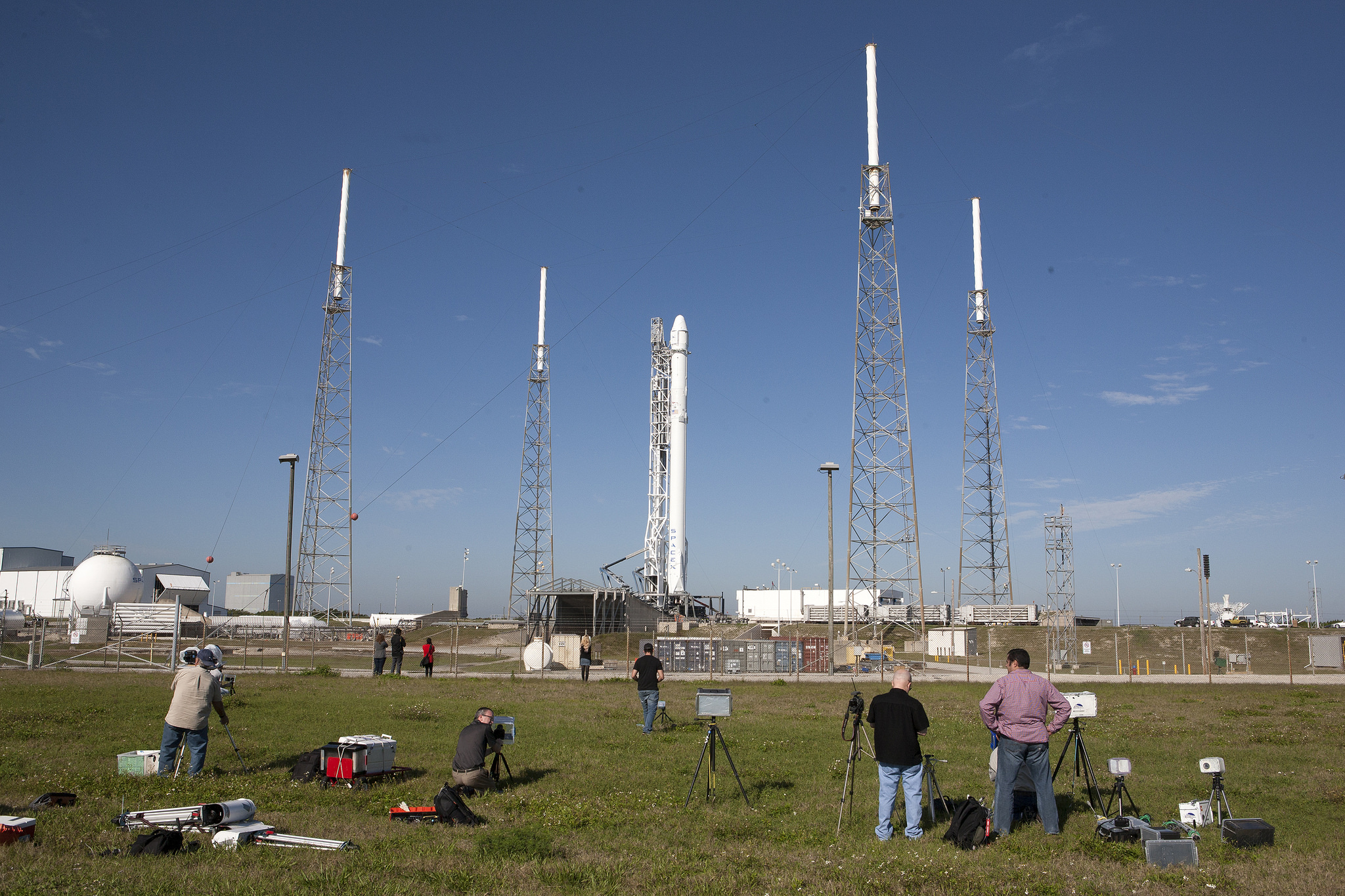 And then the Falcon 9 was ready to go.NASA
And then the Falcon 9 was ready to go.NASA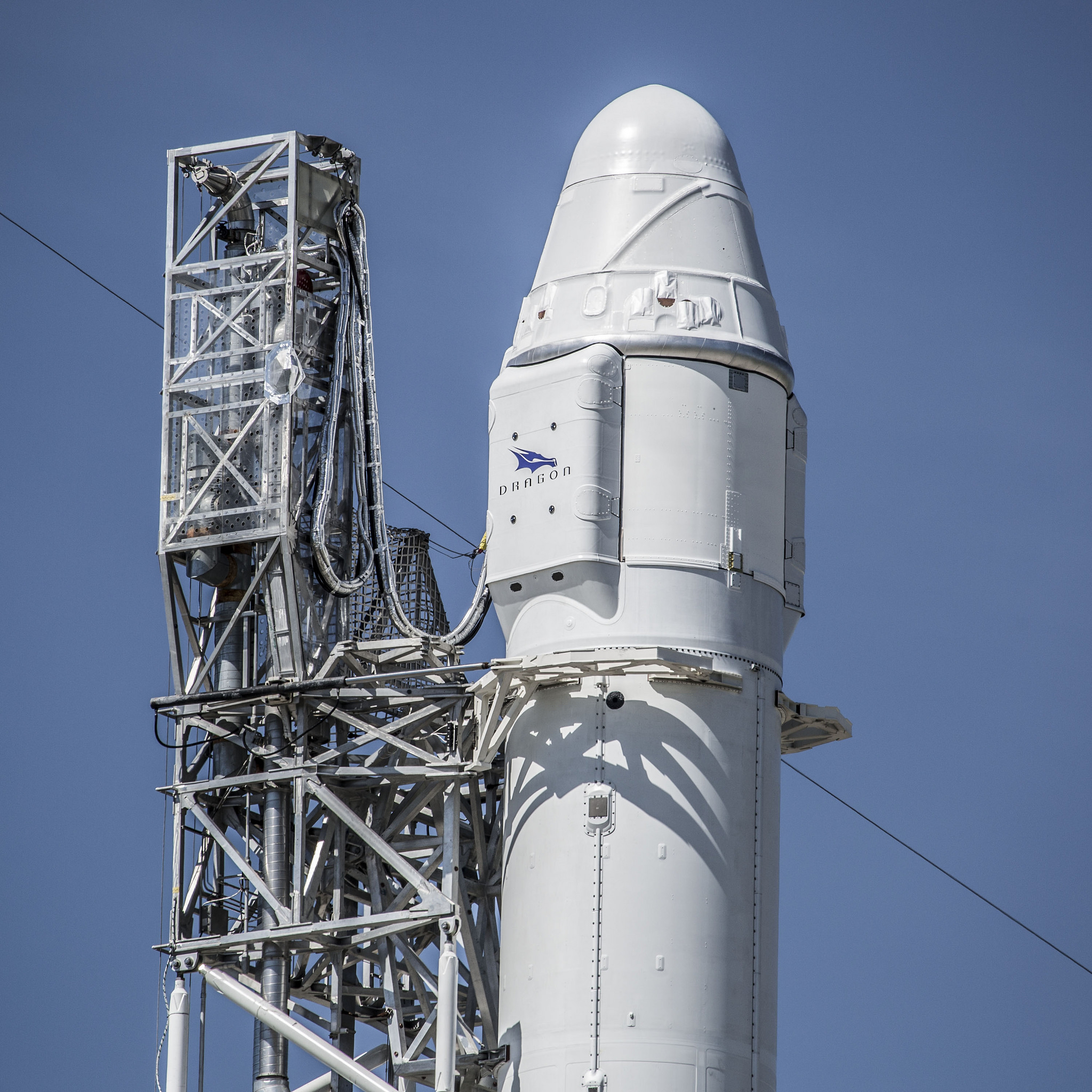 The Dragon spacecraft wrapped up tight.SpaceX
The Dragon spacecraft wrapped up tight.SpaceX The instantaneous launch window meant the Falcon 9 had to go right on time.NASA
The instantaneous launch window meant the Falcon 9 had to go right on time.NASA The perfect day for a launch—hardly a cloud in the sky.NASA
The perfect day for a launch—hardly a cloud in the sky.NASA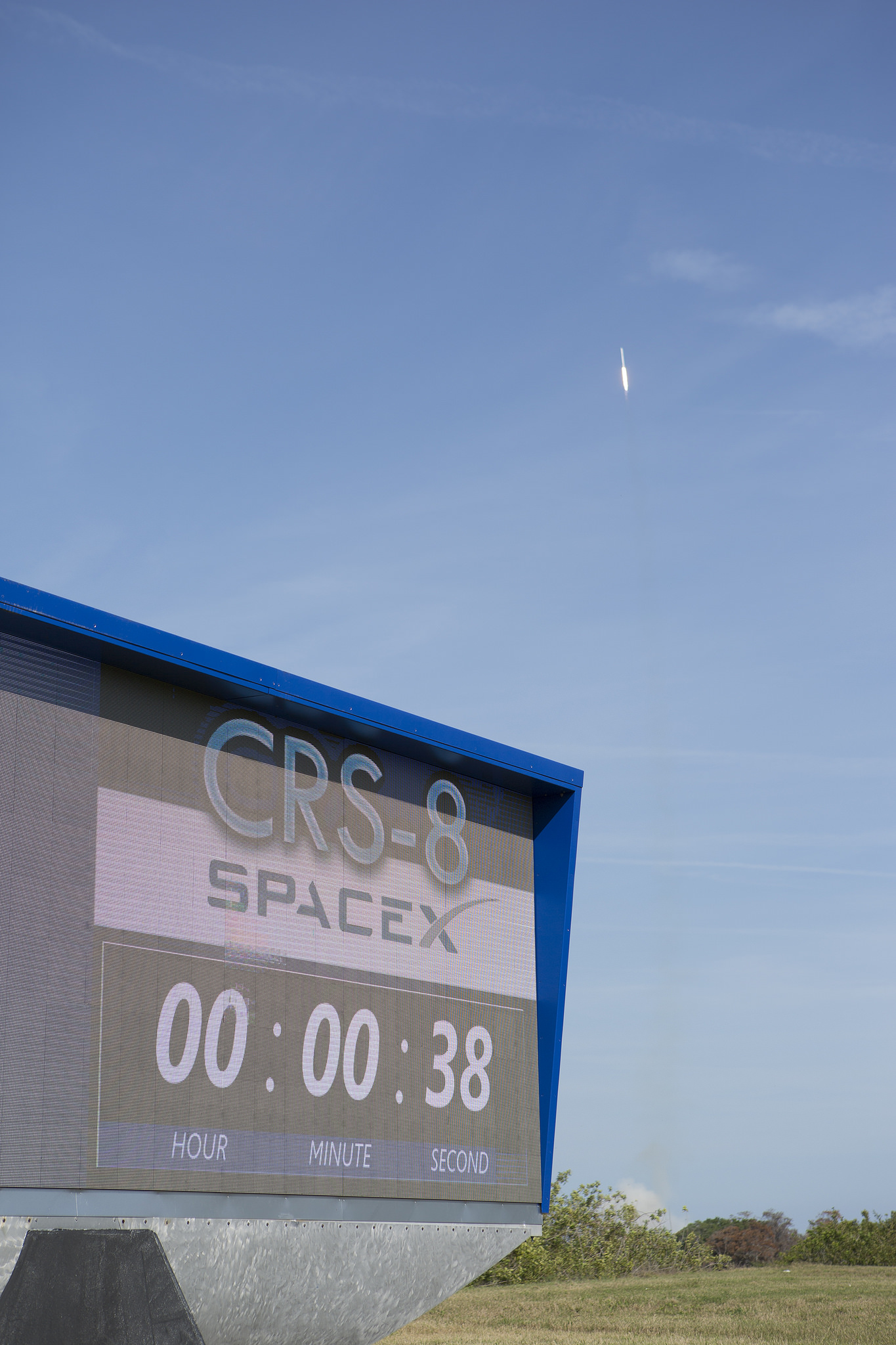 And there it goes.NASA
And there it goes.NASA The Falcon 9's nine engines burn with a thrust of more than 1.5 million pounds.NASA
The Falcon 9's nine engines burn with a thrust of more than 1.5 million pounds.NASA Before the landing Elon Musk tweeted out this photo from the autonomous drone ship.Elon Musk
Before the landing Elon Musk tweeted out this photo from the autonomous drone ship.Elon Musk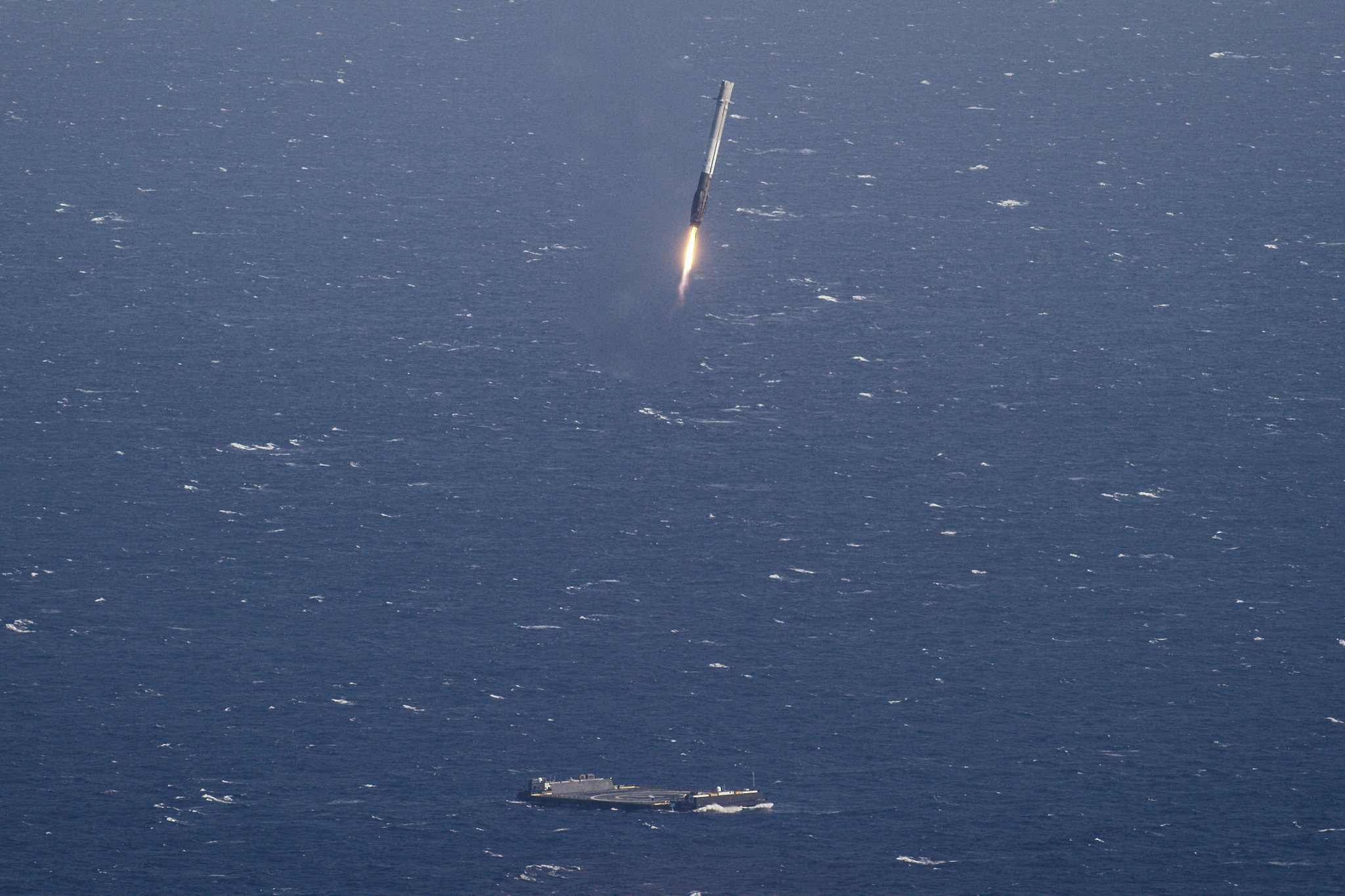 There's the rocket!SpaceX
There's the rocket!SpaceX Almost down.SpaceX
Almost down.SpaceX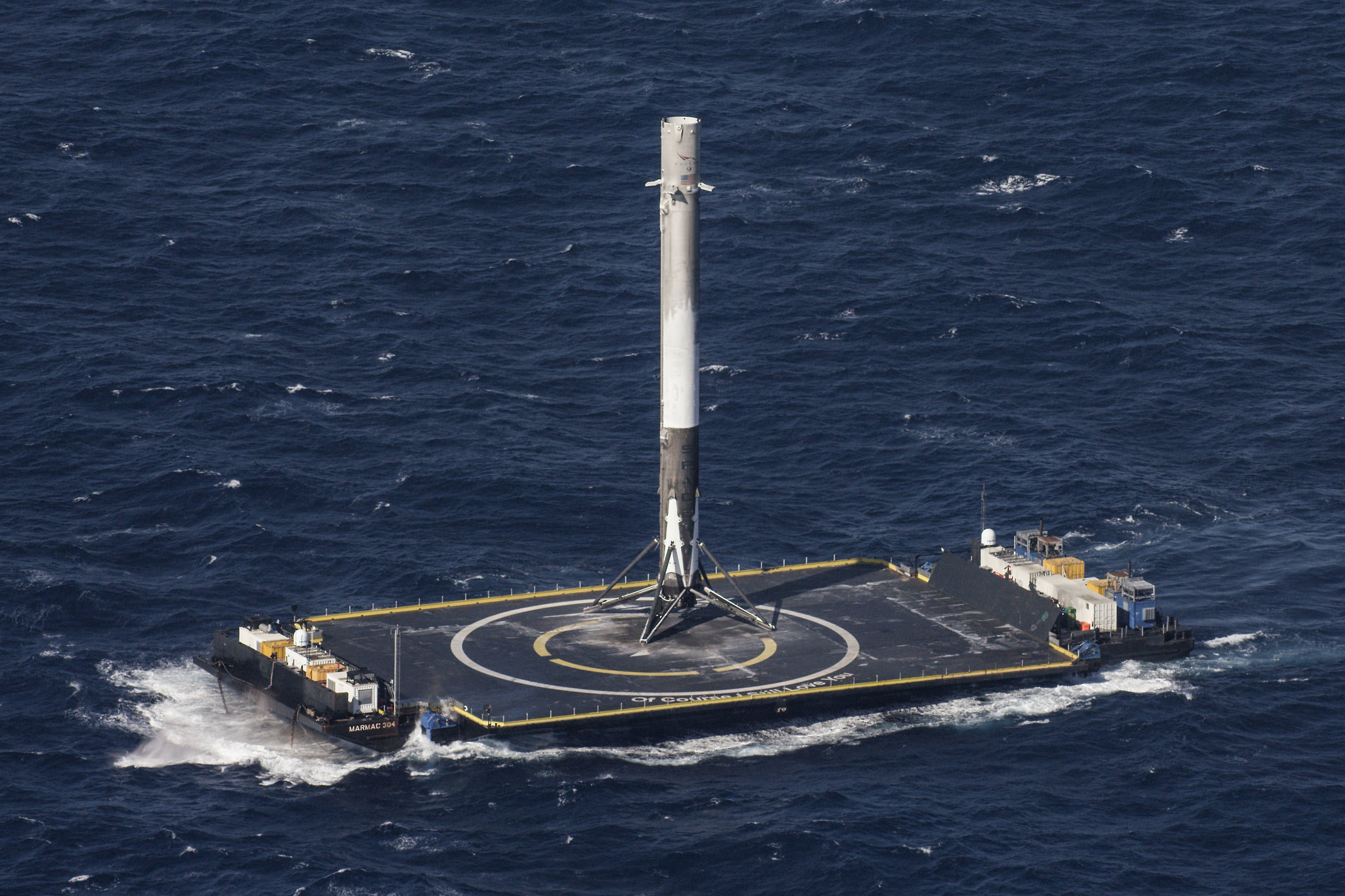 There. It. Is.SpaceX
There. It. Is.SpaceX
I was born a mere four months after the final Apollo astronauts brushed gray dust from their spacesuits and lifted off from the Moon. As my interest in space grew over the years, and writing about this industry became my profession, I felt a deepening sense of regret for missing that glorious moment of triumph in our shared space history. I lived with that regret for decades—right up until April 8, 2016.
Five years ago today, SpaceX successfully landed a Falcon 9 rocket first stage on a boat.
I was not prepared for the experience of watching a skinny, black-and-white rocket fall out of the sky, against the azure backdrop of the Atlantic Ocean, and land on a small drone ship. As whitecaps crashed into the side of the boat, it seemed like a portal opening into the future. This breakthrough in rocket technology washed away any regrets I had about missing Apollo. For, in my mind, landing a Falcon 9 first stage at sea represented an essential step toward reducing the cost of getting people and payloads into space and unlocked a bright spacefaring future.
After nearly a dozen failed attempts, subsequent landings soon filled a SpaceX hangar full of used rockets. This caught some SpaceX engineers off guard. "It even surprised us that we suddenly had ten first stages or something like that," Hans Koenigsmann, one of SpaceX's earliest hires, said a few years afterward. "And we were like, well, we didn't really account for that."
Need for sea
A few months prior to this boat landing, of course, SpaceX had successfully returned a Falcon 9 first stage to its "landing zone" along the Florida coast, near its launch pad. This was a huge achievement. But landing on a drone ship is that much more difficult. When landing on the coast, only the rocket is moving. When touching down at sea, both the rocket and the drone ship are moving, and there are sea states and more to consider.
Yet the economics pretty much require landing downrange of a launch site. That's because over the course of a launch, a rocket gradually leans from a vertical to horizontal orientation as it prepares to release its second stage on an orbital trajectory. At this point it requires tons of propellant to arrest this horizontal velocity and reverse course back to the launch site. It is much more fuel-efficient to have the rocket follow a parabolic arc and land hundreds of kilometers from the launch site.
This is borne out in the performance data. A Falcon 9 rocket that lands on a drone ship can lift about 5.5 tons to geostationary transfer orbit, compared to 3.5 tons for a rocket that lands back at the launch site. Had SpaceX not figured out how to land the Falcon 9 first stage on a drone ship, it would have eliminated about 40 percent of the rocket's lift capability, a huge penalty that would have negated the benefit of reusing rockets.

Nearly a decade ago, Jeff Bezos' Blue Origin patented the concept of landing a rocket on a barge for this very reason. (This forced SpaceX to go to court, and its challenge against the patent eventually succeeded.) But there is a big difference in knowing something and actually doing something. Since acquiring its patent, Blue Origin has yet to launch an orbital rocket, let alone land one. Bezos has retrofitted and named a platform ship, Jacklyn, but it is unlikely to catch a rocket before 2023 at the earliest.
By contrast, since its first successful landing on the drone ship Of Course I Still Love You, SpaceX has safely returned 56 more Falcon 9 rockets at sea. Ocean-based landings have proven a remarkably enabling technology. Of SpaceX's 10 orbital rocket launches in 2021, every one of them rode to orbit on a previously flown first stage. Some returned to space within four weeks of a previous launch. By landing its first Falcon 9 rocket at sea, SpaceX began a revolution in launch. No longer is reusing rockets a novelty—it's considered an essential part of the business.
"I’m really surprised when I see new launch vehicles in development now that aren’t reusable," Peter Beck, the founder of Rocket Lab, told me in December.
A personal journey
The dramatic landing of that first stage also launched me on something of a personal journey. I realized that SpaceX was not just a really interesting company doing interesting things in space. Rather, it was the transformative space company of my lifetime.
I began reporting more deeply on the company's activities, trying to understand where it had come from and to more fully glean the motivations of SpaceX founder and chief engineer Elon Musk. This ultimately resulted in a book, Liftoff, on the origins of the company. One thing I took from this reporting is that, as miraculous as automated drone ship landings may seem, they're just one in a long line of miracles that must be realized to put humans on the surface of Mars.
In the 2000s, SpaceX very nearly died on multiple occasions as a fledgling company with its Falcon 1 rocket. In the 2010s, SpaceX iterated on the Falcon 9, first winning contracts for NASA launches and commercial satellites. These missions, in turn, gave SpaceX engineers the breathing room to experiment with recovering and refurbishing used rockets. Today, thanks to this, they're able to fly first stages rapidly and at significantly reduced costs.
Now, with Starship, SpaceX is seeking to reuse a much larger orbital vehicle and bring back not just the first stage—in this, the Super Heavy booster is a lot like the Falcon 9 first stage—but the Starship vehicle as well. This represents a whole other challenge, as Starship will be coming back to Earth at orbital velocities, about Mach 23. And after this, SpaceX engineers will need to figure out how to refuel Starships in low Earth orbit, and then how to keep a crew alive en route to Mars, on the surface, and on the way back home. Each of these represents a huge engineering difficulty.
However, in reflecting on how far SpaceX has come in five years since that first boat landing, I am left with but a single, overriding thought. If this company could land rockets on boats in the middle of the ocean, what could it not do? And so I am now glad to have missed the Apollo era if it means I can be alive at this very moment, with an uncertain but boundless future before us.
Listing image by SpaceX
Article From & Read More ( SpaceX landed a rocket on a boat five years ago—it changed everything - Ars Technica )https://ift.tt/3uDzkbb
Science
No comments:
Post a Comment